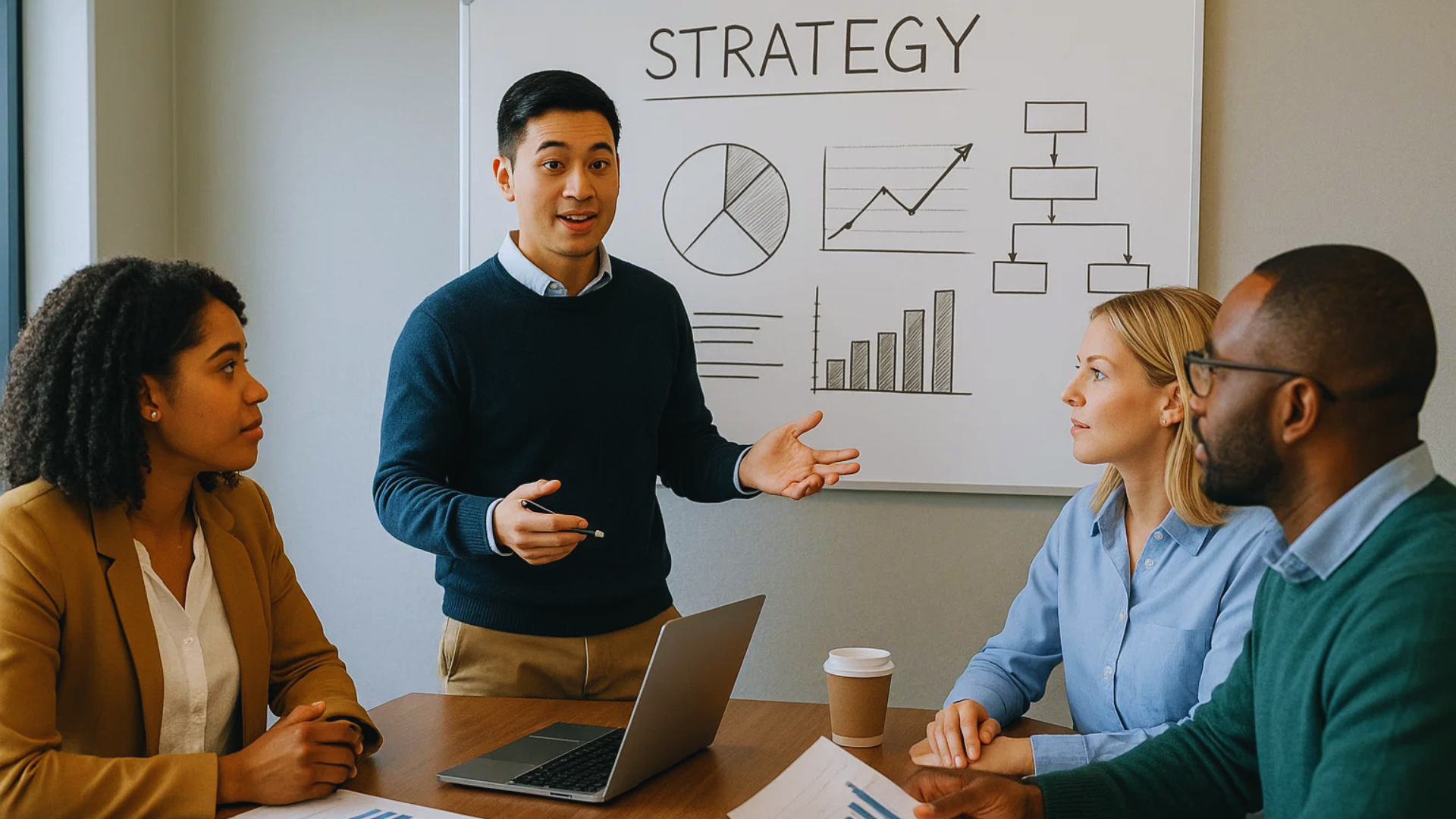Image created with canva
Building a business is not about solitary genius, it is about assembling a team that multiplies your vision, shares your mission, and delivers results. In this article, I reveal five proven strategies to help you recruit talent, set roles, nurture culture, and ignite motivation so you can scale efficiently and sustainably.
UNLEASH YOUR GROWTH, FIVE PROVEN WAYS TO BUILD A POWERFUL TEAM AND SCALE YOUR BUSINESS
Written by Gary Occhiogrosso
All rights reserved, copyright worldwide.
No business achieves sustained success without a powerful team behind it. Whether you’re launching a startup, scaling a growing brand, or reinventing an established business, the people you bring on board will ultimately determine how far and how fast you go. It’s not just about hiring talented individuals, it is about building a cohesive, committed group aligned with your mission, motivated to execute, and equipped to solve problems as they arise. In today’s competitive business environment, leadership is no longer about being the smartest person in the room, but about surrounding yourself with the right people and setting them up to thrive. Below are five proven strategies that will help you build the kind of team that propels your business forward.
- Clarify Mission, Vision, and Culture
A team aligned with a clear mission and vision performs with greater focus and energy. Successful businesses articulate why they exist, what impact they intend to create, and how their team will operate to achieve that vision. Clarity around values, behaviors, and expectations gives every team member a framework for decision-making and accountability. When your people know what matters most, how they fit into the big picture, and why their work has meaning, they move with purpose and consistency. Make your mission visible, repeat it often, and embed it in everything from onboarding to daily operations.
- Recruit Diverse, Complementary Talent
High performance teams are built on diversity, not just of race or background, but of thought, experience, and skillset. The most effective teams include a blend of personalities and strengths. While one team member may bring analytical precision, another may offer creativity and risk taking, and another may shine in execution. What matters most is that they complement each other and buy into a shared purpose. Hire not only for skill, but for integrity, curiosity, and a willingness to collaborate. Building your team is like casting for a film, each role should be filled by someone who fits both the part and the ensemble. Great businesses thrive when each person brings something unique to the table and knows their contribution is valued.
- Cultivate Psychological Safety and Shared Leadership
Psychological safety means that your team members feel comfortable speaking up, challenging assumptions, admitting mistakes, and sharing ideas without fear of punishment or embarrassment. Teams that operate in this kind of environment consistently outperform those that do not. When employees know their voices matter, they contribute more freely and innovate more confidently. Shared leadership goes hand in hand with this. Rather than concentrating authority at the top, effective leaders empower others based on expertise, not title. That fosters ownership, builds initiative, and accelerates decision making. Encourage open dialogue, invite constructive dissent, and recognize contributions frequently. When people feel heard, they feel invested.
- Set SMART Goals, Track Progress, Celebrate Wins
Great teams are focused teams. Set clear goals that are Specific, Measurable, Achievable, Relevant, and Time bound. When your team knows exactly what success looks like, they can align their efforts and prioritize their time effectively. But goals alone are not enough, you must track progress, review metrics regularly, and hold team members accountable. Weekly check-ins, dashboards, or performance reviews help correct the course when needed. Equally important, take time to celebrate wins. Recognize both individual and collective achievements. Acknowledging progress reinforces commitment and builds momentum. People stay energized when they can see how their hard work moves the needle.
- Empower Learning, Innovation, and Career Growth
The best teams are learning organizations. They embrace change, experiment often, and view challenges as opportunities to improve. Create space for your team to grow professionally. Offer workshops, mentorship, and access to tools that develop both soft and technical skills. Encourage experimentation by removing the fear of failure. When someone tries a new method or launches a bold idea, reward the effort and harvest the learning, whether it worked or not. Build career paths so your people see a future with your company. Retaining top talent is easier when individuals feel they are learning, advancing, and being supported at every stage of their journey.
Putting It All Together
- Define your mission, vision, and cultural standards
- Hire people with diverse strengths and shared values
- Foster psychological safety and shared leadership
- Set goals, track results, and celebrate success
- Prioritize ongoing learning and development
A high impact team does not come together by accident, it is built with intention, clarity, and care. When your team is connected to a mission, empowered to contribute, and driven to grow, your business will not just succeed, it will thrive.
Sources
- MIT Human Resources “Important Steps When Building a New Team” hr.mit.edu
- Capital One “7 tips to build a successful business team” mckinsey.com+5capitalone.com+5reddit.com+5
- Indeed “8 Steps To Building a Successful Team” indeed.com
- Supercell Wired insight wired.com
- Psychological safety Wikipedia en.wikipedia.org+2en.wikipedia.org+2en.wikipedia.org+2
- Shared leadership Wikipedia en.wikipedia.org+5en.wikipedia.org+5barrons.com+5
- SMART goals research
- Al Humes leadership Barron’s & Times thetimes.co.uk+2thetimes.co.uk+2barrons.com+2
- Succession planning Wikipedia en.wikipedia.org+2en.wikipedia.org+2thetimes.co.uk+2
- Investing in staff Times case
- Team effectiveness McKinsey mckinsey.com+1en.wikipedia.org+1
This article was researched, outlined and edited with the support of A.I.










